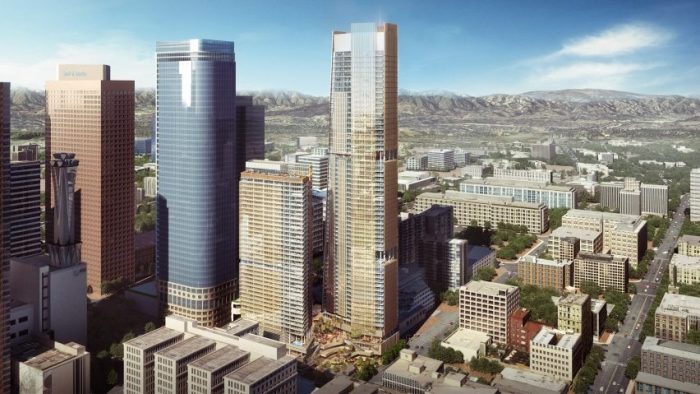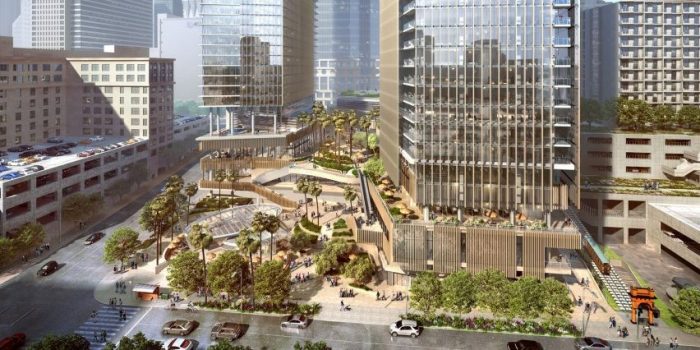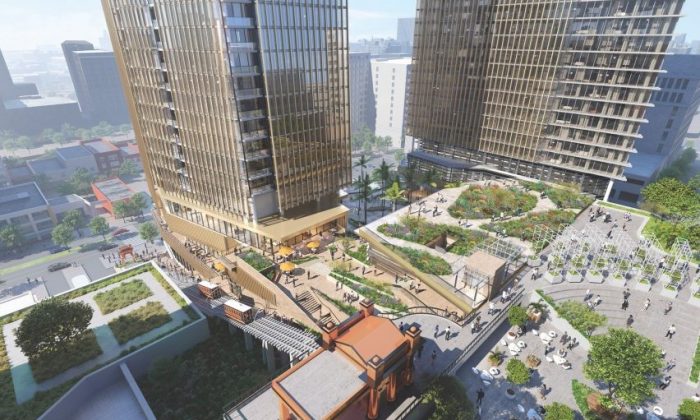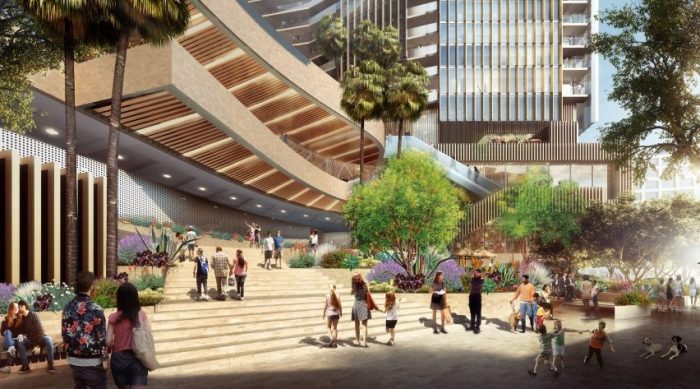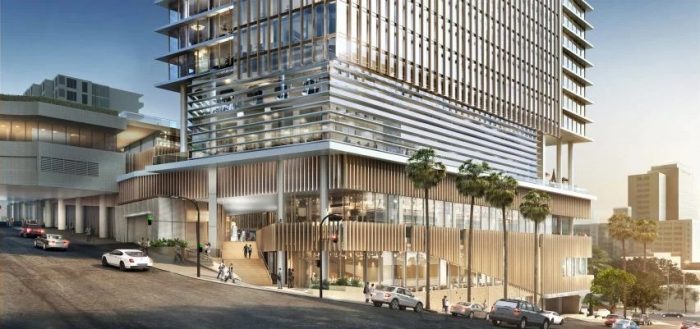About The Third-Tallest Skyscraper in Los Angeles:
The Angels Landing skyscraper in Los Angeles, which will be the third-highest building in the city and the tallest in the US to be constructed by Black developers, was designed by US firm Handel Architects.
The development, which is planned for a location in Downtown Los Angeles between Hill Street and California Plaza, will feature two mixed-use towers, street-front shops and restaurants, as well as a multi-story outdoor park that incorporates Angel’s Flight, a trolley built in 1901.
The tallest of the towers will be 854 feet tall (260 metres) with 88 floors 63 above ground – and the smaller will be 494 feet tall (150 metres).
Gary Handel, the founder of Handel Architects, claims that the building would function as a form of “wayfinder” that will use its prominent location on the skyline to point to the location of the public area at the base.
The towers will be supported by a platform that houses the entrances to the hotel and retail spaces and extends outside to connect the two buildings with an outdoor gathering area that terraces up between the structure, linking the various features.
At California Plaza, a current park that Angels Landing develops and incorporates into the outdoor public space, the terrace’s sculptural concrete massing will come to an end.
Handel claimed that the open area on all these distinct floors, totaling more than 56,000 square feet, “creates nearly a modern rendition of an Italian hill town.”
A series of vertical louvres will operate as sun shades along the facades. Closer to the ground, around the podium, the louvres will be spaced close together and reflect a more “organic” material palette, though the specific materials for the facade haven’t been set, according to Handel.
The louvre designs are still present in a series of curtain-wall panels that emphasise the height of the tower while also providing sun shielding in the higher portions of the towers. The curtain wall’s breaks give the balconies more depth.
Handel claimed that the way the balconies and louvres interact “further articulates the tower, lends a sense of verticality, and forms what we think is an attractive composition.”
The smaller of the two towers has a “lozenge” shape and a height that the architecture firm referred to as “transitional” since it connects the height of the nearby buildings to the larger tower.
Where the building’s edge meets the entrance park, floor plates will protrude outward, forming fins that will provide additional shade for the homes below.
The facade of the larger tower is broken up by open spaces where the exposed beams can be seen once more. The larger tower will have a slightly inclined side. These intersections will highlight the tower’s slight slant and offer room for expansive terraces that are covered. The structure’s pinnacle will be crowned by a parapet whose louvres extend past the top of the building.
A skyscraper in Jersey City with gridded white façade and two residential towers next to the iconic Manhattan church were previously completed by the US firm Handel Architects.


